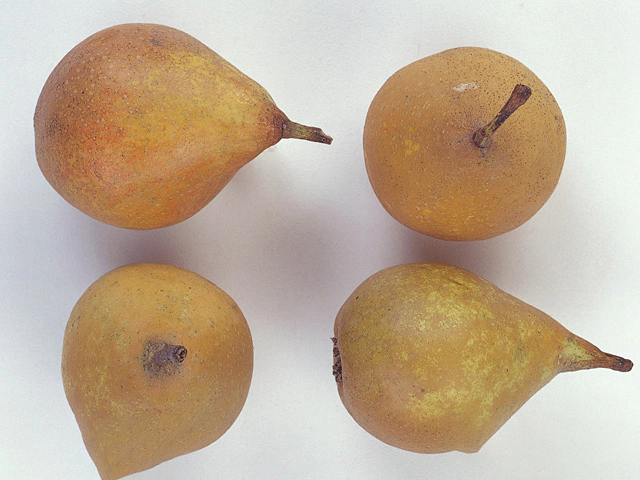Ornamental fruits a piece Pyrus communis

| Fruit type | Pome |
| Leaf type | Foliage leaf |
| Winter hardness | Good (USDA-zone 5, 6) |
| Inflorescence | Corymb |
| Leaf duration | Deciduous |
| Light conditions | Sunny |
| Leaf division | Simple |
| Plant, growth type | Erect |
| Flower sex (distribution) | Monoecious (flowers bisexual) |
| Toxicity (if consumed) | Not or barely |
| Moisture requirements | Well-drained |
Ornamental fruits can add a unique and vibrant touch to any garden or landscape. One such fruit variety is the Pyrus communis, commonly known as the pear tree. This particular tree is prized not only for its delicious fruit but also for its ornamental value.
One of the standout features of the Pyrus communis is its pome fruit, which is the characteristic fruit type of the pear family. These fruits are not only visually appealing but also possess a sweet and juicy flesh that is often enjoyed fresh or used in various culinary creations.
The Pyrus communis is also known for its foliage leaves, which are classified as simple, meaning they are not divided or pinnate. These leaves add a lush greenery to the tree, making it a delightful sight in any garden. Being deciduous, the leaves of the Pyrus communis fall off during the winter months, allowing the tree's ornamental fruits to take center stage.
In terms of hardiness, the Pyrus communis fares well in USDA zones 5 and 6, making it suitable for a wide range of climates. It can withstand winter conditions and continue to thrive, bringing beauty to the landscape year after year.
Another notable characteristic of the Pyrus communis is its inflorescence, which is arranged in corymbs. These flower clusters add an additional dimension of beauty to the tree, with their delicate and fragrant blooms. The Pyrus communis is a monoecious plant, meaning it has both male and female flowers on the same tree, making it self-pollinating and ensuring a reliable fruit set.
While many fruits may pose a toxicity risk if consumed in large quantities, the Pyrus communis is deemed to be not or barely toxic. This makes it a suitable choice for gardens that may have children or pets, as there is a reduced risk if accidental consumption occurs.
In terms of moisture requirements, the Pyrus communis thrives in well-drained soil. It is essential to ensure adequate drainage to prevent the tree's roots from becoming waterlogged. However, it is important to note that the tree should still receive regular watering to maintain its health and promote fruit production.
Overall, the Pyrus communis is a wonderful addition to any garden or landscape that provides ornamental fruits, enchanting foliage leaves, and a reliable growth habit. Its adaptability to different light conditions, coupled with its low maintenance needs, make it an excellent choice for both novice and experienced gardeners alike. So, why not consider adding a Pyrus communis to your garden and enjoy its bountiful harvest and visual splendor for years to come?
Market availability index by month:
| Jan. | Feb. | Mar. | Apr. | May | Jun. | Jul. | Aug. | Sep. | Oct. | Nov. | Dec. |
|---|---|---|---|---|---|---|---|---|---|---|---|
| 1 | 1 | - | 1 | 1 | 1 | 1 | 3 | 4 | 4 | 1 | 2 |